Getting started in professional photography
What is the right way to become self-employed? Well, there is no one-size-fits-all answer to this question. Try to find out which path is right for you and which solution meets your individual needs. It is also helpful for the decision if you ask yourself where your strengths lie. If you feel like pursuing more than just one of the 5 paths into the profession of photographer presented below, this is of course also possible.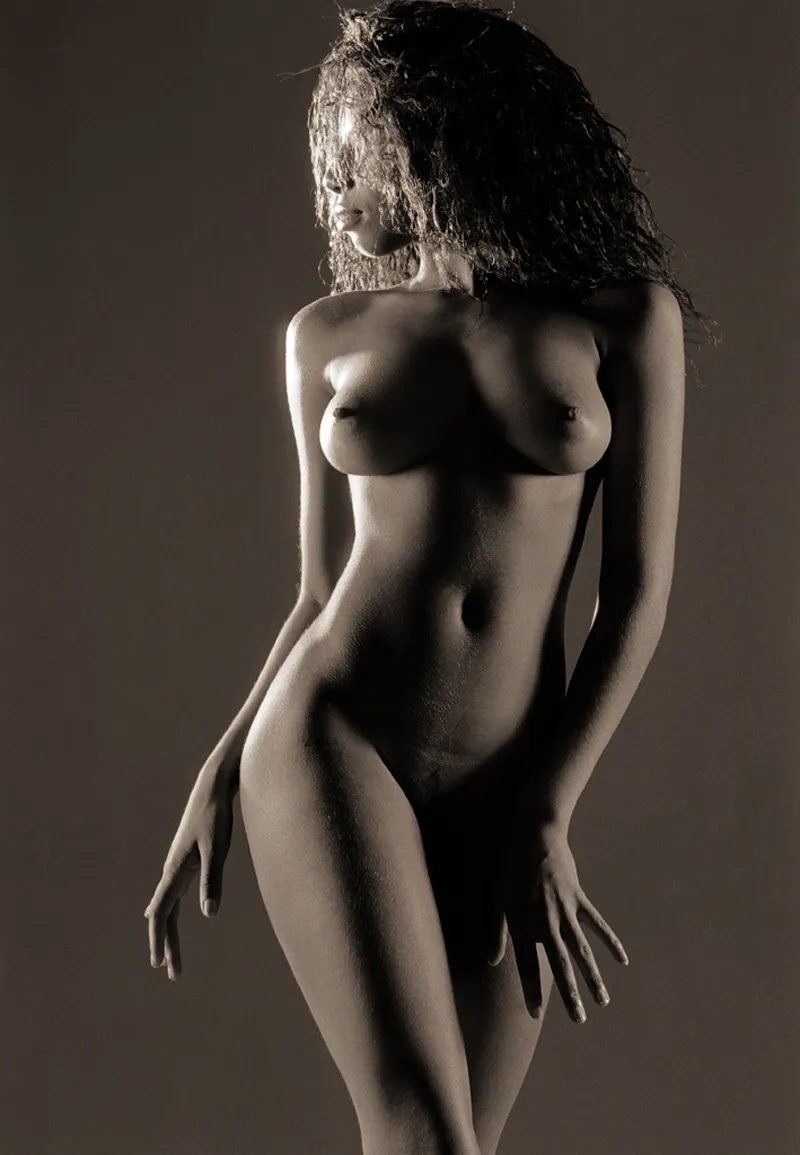
Internships and assistantships
In order to gain an initial insight into the working world of a professional photographer, it is advisable to do an internship lasting several weeks, but not less than two to three weeks.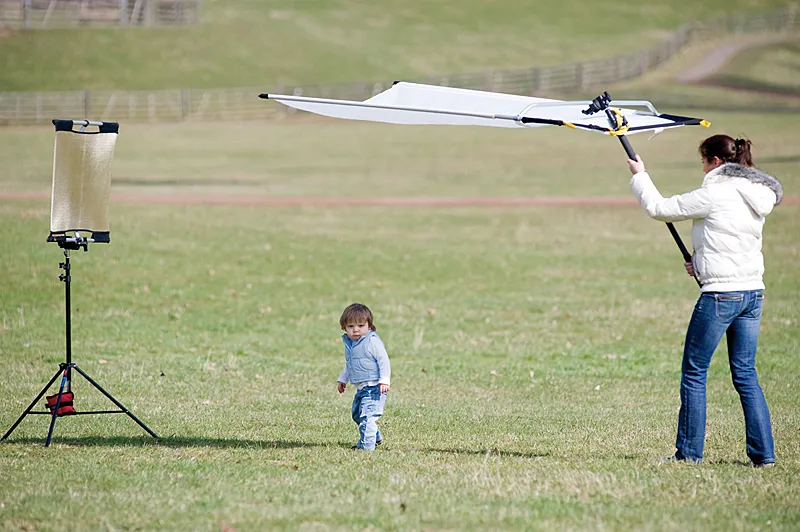
As part of an internship or as an assistant, you will not only learn how to use brighteners and darkeners correctly. You will also learn a lot about the day-to-day work of a photographer. This way you can find out without obligation whether this is the right profession for you.
If you find that the direction of the internship company does not match your expectations at all, the (relatively short) internship will still have been worthwhile: because even before you have invested more than just time or committed to an apprenticeship, you will have been able to find out whether the path you have chosen was the right one for you!
Sometimes you realize during an internship that the path you have chosen is the right one, but that you need to change your focus. In the 12th grade, I completed an internship with an industrial and advertising photographer. During these two weeks, I particularly remember the shoot of several male choral societies. However, I prefer photographing rock groups at concerts rather than men's choir rehearsals. The following photo shows the H-Blockx at the Ruhr Tent Festival in summer 2010.
Assistantships are just as suitable as internships for finding out which path you want to take later as a freelance photographer. It therefore makes sense, or is even highly advisable, to work for different photographers (either simultaneously or consecutively, depending on the amount of work), provided that you can afford it financially, as assistants often don't get paid at all, or only on a case-by-case basis, for example for important jobs.
If internships are primarily done to orientate yourself professionally, assistantships with well-known photographers are primarily important for your own advancement. Here you will not only learn a lot in terms of photography, but also how a successful business works in practice.
Setting up the photo studio, customer contacts, acquisition (= all customer acquisition measures), office work, taxes, image processing, equipment maintenance, archiving, order processing, invoicing and dunning, strategic orientation, etc. are just some of the points that are interesting and important for a newcomer!
Especially for career starters, an assistant (I am deliberately not talking about an assistant "position" here!) is also morally important, as a benevolent "mentor" offers a newcomer to this professional field a certain degree of security. The fear of becoming self-employed, of "jumping in at the deep end", is not insignificantly alleviated by a photo assistant. However, make sure that you don't rely completely on the "old hand" when it comes to important decisions! Not that he or she could be wrong - but it can happen that after a few months you feel dependent on your mentor and become afraid of taking the final step into self-employment (after the end of the assistantship).
Especially if you work as an assistant for a very good, successful and/or well-known photographer, it can easily feel as if you are still light years away from being able to work independently and on your own as a photographer. There are many assistants who fail to make the leap into self-responsibility over the years, and I think the fear of suddenly mastering your professional life as a lone fighter, i.e. on your own, is to blame in most cases!
It's best to plan a fixed period of time during which you want to work as a freelance or permanent assistant for one or, better still, several photographers; for example, two years. And then, as planned, become "properly" self-employed by offering your services on the market as a photographer on your own responsibility. Entrepreneurial courage is one of the qualities you need to have if you want to be a successful photographer one day!
The classic, craft-based apprenticeship
It is almost exclusively young people who choose to train as photographers in a craft-based apprenticeship. Every year, just over 2000 young people find a training place and begin a corresponding apprenticeship. Young women (approx. two thirds) dominate the craft-based training; quite different from the rest of the photography scene, if you look at the gender-specific composition of photo clubs or photographer associations, for example.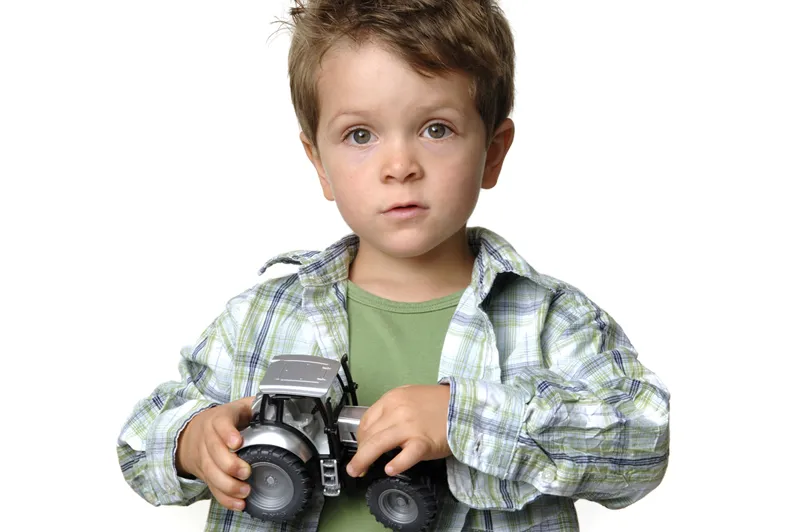
Family, wedding and portrait photos are the main subject areas of the classically characterized professional training. Taking photos of children is therefore part of the trainees' everyday life. Unfortunately, there are many companies where trainees are mainly occupied with unskilled work in the first two years of their apprenticeship or are only employed in sales, so that they lack practical experience later on.
However, the drop-out rate for photographer apprenticeships is significantly higher (approx. 20 percent) than for other training occupations. Apparently, there is a wide gap between perception and reality in the area of the three-year technical photographic apprenticeship (which can be shortened to two and a half years with good grades, provided the apprentice has an Abitur or Fachabitur):
- Many companies are highly specialized. This can be too one-sided for trainees. Always having to take biometric passport and application photos in standard poses is boring! This severely limits creativity, which causes dissatisfaction.
- As many established photographers either work alone or with only one employee in their studios, trainees rarely have the option of being taken on after completing their training.
- Due to low prices, customers can often only be served profitably if they are only given a short period of time. It is therefore not uncommon for the flash heads of the flash system, once set up, to hardly ever be moved. But time pressure and creativity are like fire and water. They simply don't go together! Anyone who is only ever allowed to photograph customers according to a tried and tested "scheme F" will quickly lose interest in what is actually a creative profession.
- Due to the size of the companies, apprentices are often used as cheap labor (average pay is 290 euros per month) to perform mainly ancillary tasks such as selling memory cards and cameras, cleaning and operating the lab machines/photo printers. The boss takes the (interesting) photos. Another reason to throw in the towel in frustration after a short time!
- "Apprenticeship years are not master years" - this saying also applies to photographer training, because photography requires a high level of personal commitment, but this is poorly rewarded in monetary terms. This is partly due to the fact that there are enough people who are keenly interested in this training profession, but also to the fact that, due to the competitive situation, established photographers have hardly been able to cover their costs for years, let alone make a respectable profit.
- Many people no longer go to photographers (except for wedding photos and biometric passport photos) because they have their own digital camera and photo printer. And a number of newcomers who offer photos on the side are registering a side business (unfortunately many don't!) and competing with the photographers already on the market. It is fair to say that more and more providers are competing for fewer and fewer jobs. The career prospects after the apprenticeship are therefore anything but rosy. However, trainees only realize this during their training, which leads quite a few of them to drop out and look for another profession.
Sometimes the age of the trainees is also to blame for the high drop-out rate. The young age of the trainees is typical of the path to becoming a photographer via an apprenticeship. And at a young age, many people are simply not yet "mature" enough to make a final decision about which career they want to pursue in the long term.
However, there are also a number of advantages that speak in favor of a craft-oriented photography apprenticeship:
- If you find a good company and show motivation and commitment, you will be rewarded with good, sound training.
- The qualification is state-certified, which can certainly be an advertising argument against unskilled competitors.
- After the training and subsequent master craftsman's examination, photographers are then free to start a course at a university of applied sciences, even without having completed school with a general higher education entrance qualification.
- And last but not least, they were able to gain an insight into a company that exists on the market. This is valuable even if you decide to change your focus later on.
The academic path (photography studies)
Before you decide to study photography (the prerequisite is that you have a high school diploma, master craftsman's certificate or entrance qualification for universities of applied sciences), you should first inform yourself thoroughly about the universities in question and their admission requirements. However, it is not only advisable to visit the university's official website for general information about the course. Talking to lecturers and students can also provide valuable insider knowledge, which can have a strong influence on the decision as to whether to start the course (whether at all, and if so, whether at the university in question). Students in higher semesters in particular have a well-founded insight into the course of study and the peculiarities of the course of study at the university in question, which means a wealth of useful information (about course content, admission procedures, realistic duration of study, equipment at the university, BAföG funding, awarding of scholarships, etc.) for prospective students.
Before starting a course of study, find out exactly what the main areas of photographic teaching are in the faculties in question. Only start a degree course if the course content appeals to you and if you have the feeling that you will be able to work successfully as a photographer later on with the knowledge you have acquired.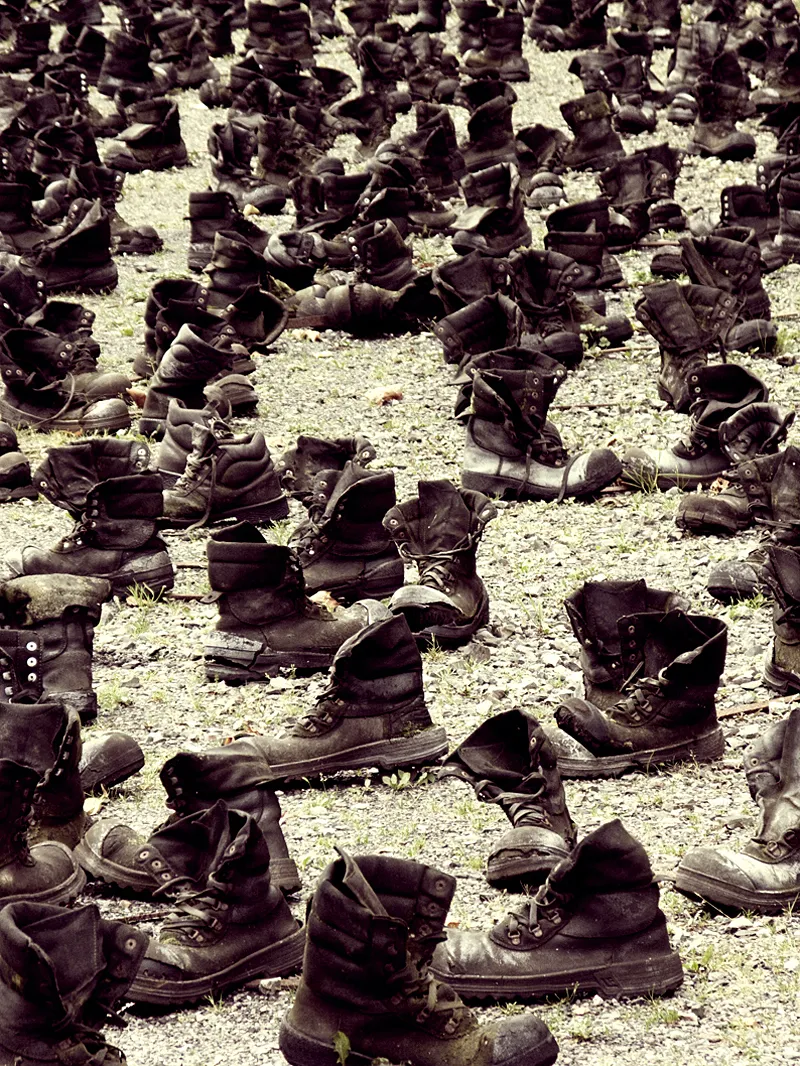
Bear in mind that you are planning to spend a large part of your life studying. A wrong decision will therefore have completely different consequences (at least in terms of time) than almost everything else you have done in the past. The decision to study photography at a particular university needs to be carefully considered!
Once you have decided on one or more suitable institutions, the lengthy application process begins. As only a maximum of one in ten prospective students is offered a place on a photography course, the few places that are available are highly coveted, so it should be clear to everyone that the application documents must be compiled extremely carefully. For degree courses in photography, the photo portfolio is the decisive instrument for convincing the respective lecturers at the universities of your own talent and photographic passion. There are special "portfolio preparation courses" (which last up to a year) and "portfolio consultations" offered by the respective educational institutions. Also take the opportunity to look at successful portfolios of accepted applicants (i.e. students who have already been accepted).
The portfolio presentation must cover all possible areas. Show different techniques, image processing, etc. You should present a wide range of motifs. And you are often given a specific subject area in advance by the professor, which you have to fulfill to the best of your ability. In Cologne, for example, you have six months to do this. If the selection committee of lecturers likes your work, you will be accepted. The assessment is therefore purely subjective.
In addition to the portfolio, aptitude tests decide whether the applicant gets one of the highly coveted study places, again depending on the university. After the portfolio examination, which is a first rough screening, the applicant is invited to a practical and an oral examination. The examinations serve to see how the applicant works artistically and creatively under stress, but also whether he or she is suitable and - last but not least - whether he or she is the author of the photographs submitted. In the oral aptitude test in particular, the examiners try to find out (in addition to getting to know the applicant) whether the candidate is personally suited to the course, whether he or she will be passionate about the artistic studies and whether he or she is able to work independently and conceptually.
Some teaching institutes also require that the applicant has already completed an internship of at least six weeks in a media-oriented company before starting the course, which must be proven by a written certificate from the company.
As the choice of university has a major influence on your future skills, your photographic style and therefore on your future path as a professional photographer, it is advisable to proceed with extreme care and to obtain sufficient information beforehand.
Private photography schools
Studying at a private photography school will be of interest to all those who do not have the admission requirements to study at a state university (the general higher education entrance qualification) and yet do not want to do without some kind of "study". (Exception: the design akademie Berlin requires, among other things, proof of a higher education entrance qualification or a comparable recognized certificate).
The following private schools were listed in a recent report in the magazine PROFIFOTO (issue 1-2/2011): design akademie Berlin, Lette-Verein Berlin, Neue Schule für Fotografie Berlin, Ostkreuzschule für Fotografie und Gestaltung Berlin, Photoacademy Urbschat Berlin, Best Sabel Bildungszentrum Berlin, Freie Akademie der bildenden Künste Essen, Lazi Akademie Esslingen, Fotoakademie Köln, Photo+Medienforum Kiel, Privatschule für Fotodesign Pforzheim. It is striking that most of these schools are located in Berlin. Only 5 out of 11 of the private institutions mentioned here that offer training as a photographer in the form of a degree course are not based in Berlin.
The extent to which training at a private institution is a good substitute for a degree course depends very much on the content of the training, the commitment, knowledge and skills of the teaching staff, but also on the equipment available. The fact is that many private schools are not allowed to award state-recognized qualifications. Only the Lazi Akademie in Esslingen, the Best Sabel Bildungszentrum in Berlin, the Photo+Medienforum Kiel and the Lette-Verein award the degree of a state-recognized or state-certified photo designer (Photo+Medienforum Kiel: state-recognized photographer; design akademie Berlin: Bachelor of Arts). The others adorn their graduates with self-devised titles such as "Photoartist" or any other certificate.
However, it is not the title that is decisive, but how much the graduates have learned. The quality of teaching as a guarantee of professional success is - as everywhere - not openly apparent in advance. Reports from graduates or information days at the institution in question are helpful here, if such a thing is offered.
One example is the design akademie Berlin, which regularly offers information days. The menu item for this can be found directly on the homepage of the website.
Once you have decided to study at a private school for photography, the question of which institution to choose remains. In addition to the location, financial issues often play a decisive role here, as the "tuition fees" vary from 85 euros per month plus material costs at the Lette-Verein Berlin to 1,760 euros at the Freie Akademie der Künste in Essen, depending on the school. Nevertheless, the same applies here: It is not the cheapest price that is decisive, but the price-performance ratio!
The following is also important:
- What are the admission requirements? (Entrance examination? Completed internship? Portfolio review? Interview? Homework?)
- How big are the classes (number of students)?
- Is there a trial course? (The design akademie Berlin, for example, offers a three-day trial course for 160 euros).
- Is the institution supported by federal funds; can I get BAföG there?
- Are there scholarships? Scholarships are awarded, for example, at the Fotoakademie Köln and the Freie Akademie der bildenden Künste Essen.
- Is the course only available as a full-time course or can it also be taken part-time (such as at the Academy of Fine Arts in Essen)?
- Are preparatory courses offered to make up for a lack of basic knowledge?
- Is photography also applied in practice during the course?
- Is the teaching content up-to-date (image processing using Photoshop instead of lab work)?
- Which lecturers work at the private photography school? What are their references, what visual language do they represent?
- Are photographic works of the students and final theses shown so that one can get an idea of the quality of the graduates? (Too bad: the atmospheric photos that can be seen in the photo gallery of the Private School for Photo Design Pforzheim cannot be attributed. The author is not named, so it is not clear whether the photos were taken by a lecturer or by students).
- How long is the course?
- What specializations are taught? For example, works from the advertising/industry sector (1 photo) and the architecture sector (5 photos) are hardly present in the Photoacademy Urbschat's self-promotion, while a number of works are shown in the portrait or people sector (as of January 2011).
If you already know where you want to focus your photographic journey before you start your training, then you should choose an institution that has the relevant know-how.
The gallery of the Cologne Photo Academy is interesting and well done. Project work by trainees is presented here. The presentation includes attribution, but it is not possible to clearly assign photographer to image in the case of multiple authorship.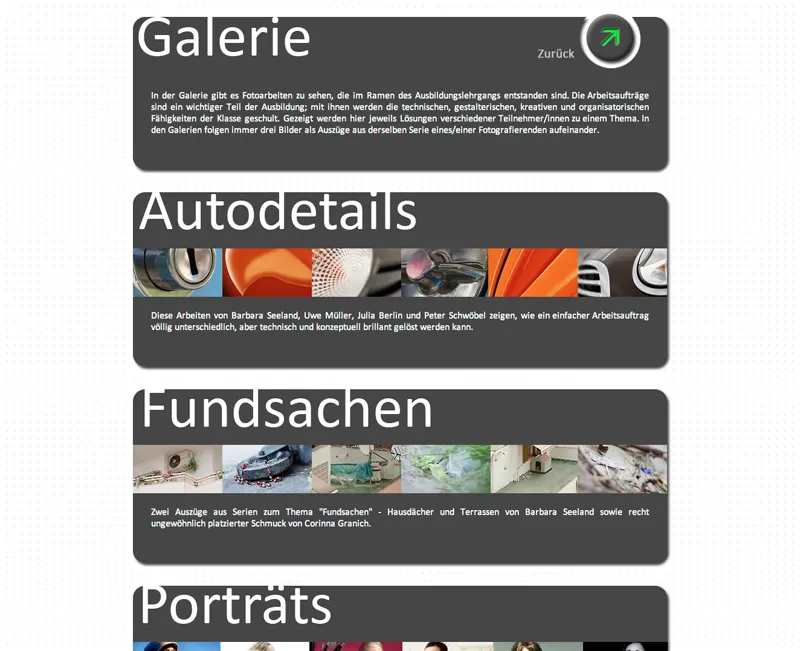
Detailed research into which private school meets your own requirements is therefore strongly recommended! In addition to conversations with students and graduates, the self-presentation (e.g. the website) of the private institutions is also very informative. If, for example, the photographic work shown is not appealing or does not make a professional impression, you should look around for another institution. It may also not inspire confidence if the school's website does not meet the requirements of the German Telemedia Act (e.g. hard-to-find imprint).
Note: The websites of the private photography schools mentioned above can be found in the appendix of this tutorial series (part 10).
The self-taught way (lateral entry)
If you don't want to do an apprenticeship or take the long route of photographic training as part of a degree course, or if you think that you'll be happier if you just do your own thing and don't want to base your photographic activity on the tastes of any instructors or lecturers, then the self-taught career change is exactly the right path for you.
Even career changers need to acquire (practice-oriented) knowledge in order to be able to work successfully as a photographer. By studying on your own, you can learn important tips and tricks that will be useful in everyday photography.
As part of my coaching work for newcomers to the profession, I have met many committed photographers who have taken this courageous step into self-employment full of enthusiasm and who will certainly work successfully in this profession in the long term. However, I have also met people who have taken this step, perhaps courageously, but completely unprepared and far too early, and who will therefore probably fail. So where is the difference between those who will succeed and those who - unless they have sufficient financial backing or "vitamin B" - are undoubtedly doomed to failure?
The most common mistake made by young professionals is to try to start their own business far too early. You should already have sufficient experience and photographic skills before you take the plunge into self-employment. Otherwise you will "fall flat on your face". Studying internet tutorials, reading textbooks and specialist magazines will help you to close any gaps and gain important knowledge for a successful start.
You should already be very advanced in terms of photography before you take the plunge into self-employment. Enjoying photography alone is not enough!
The following photo was taken years before I started my own business as a commercial photographer. I still enjoy looking at it today, because it is in no way inferior to my current work in terms of quality.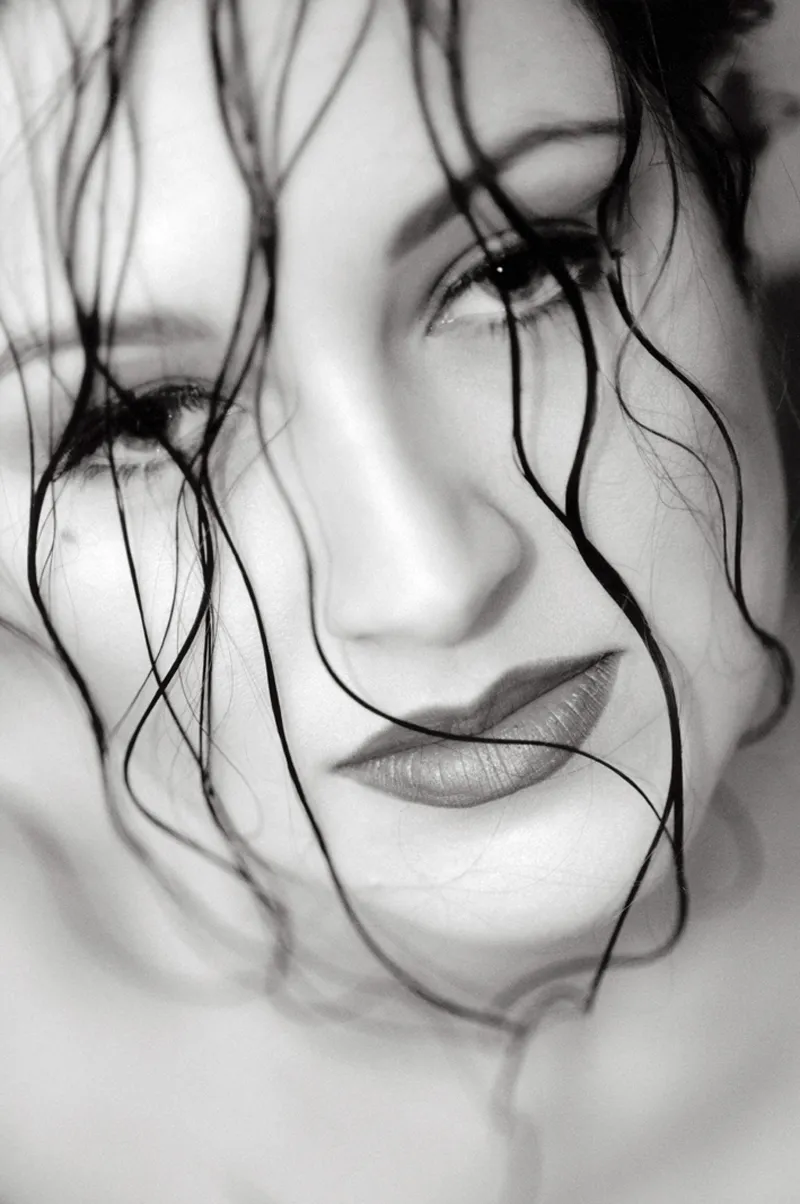
In addition, I strongly recommend attending photo workshops and seminars (where, for example, basic photographic knowledge is taught) and portfolio viewings (to get honest feedback from a knowledgeable professional).
For some years now, there has no longer been a requirement to be a "master photographer". Career changers can now also become self-employed photographers. Either as an artist or photojournalist, or as a photographer working as a craftsman. The only thing that needs to be taken into account is the necessary notification requirements (see the chapter "Dealing with the authorities & Co.") when starting up a business.


